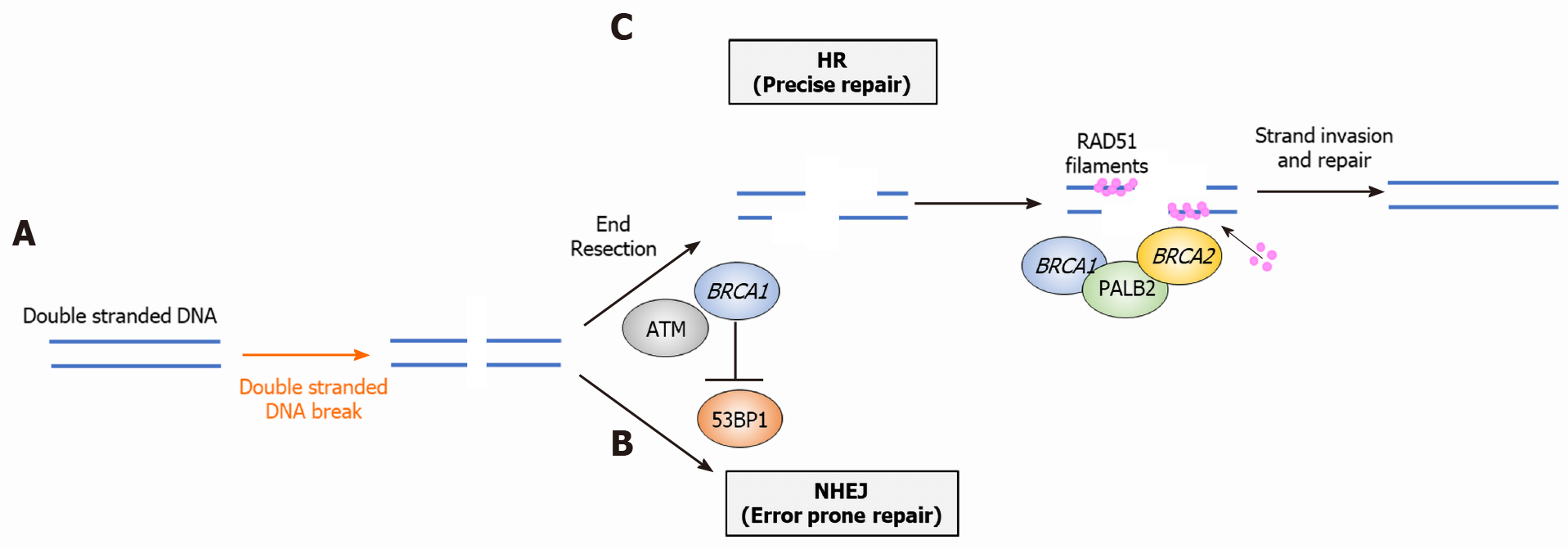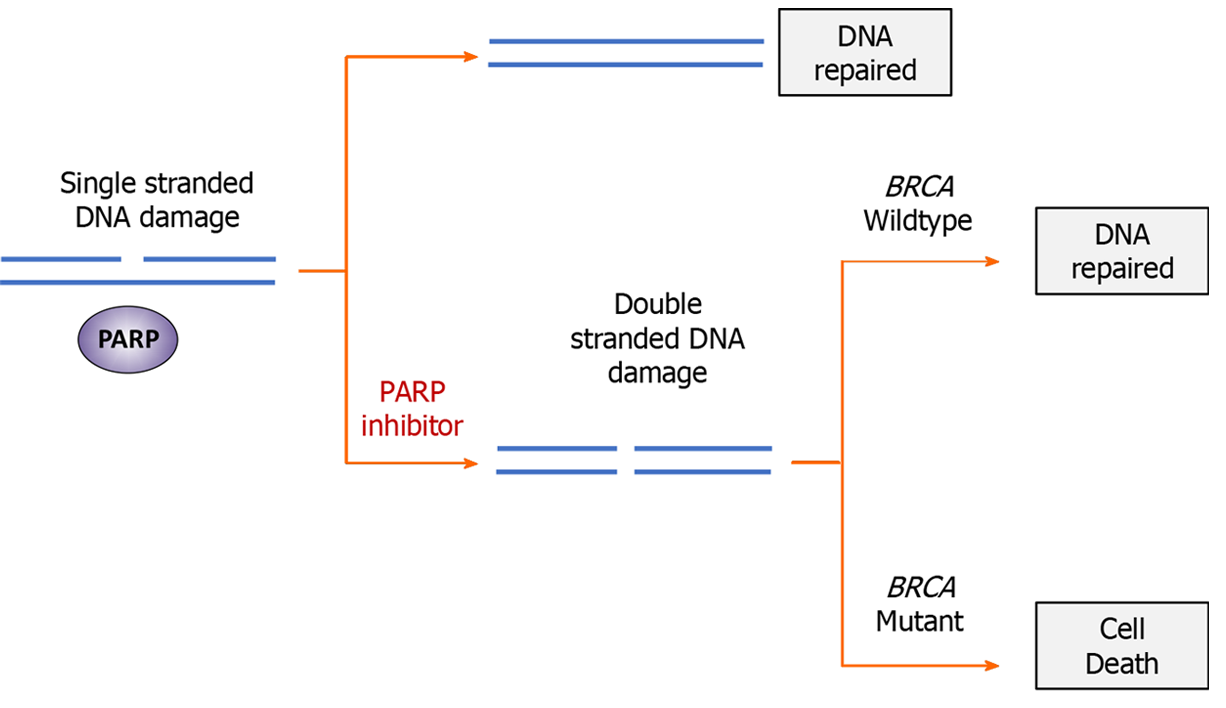Copyright
©The Author(s) 2021.
World J Gastroenterol. May 7, 2021; 27(17): 1943-1958
Published online May 7, 2021. doi: 10.3748/wjg.v27.i17.1943
Published online May 7, 2021. doi: 10.3748/wjg.v27.i17.1943
Figure 1 Overview of the homologous repair pathway and roles of key proteins.
A: Following double strand break, BRCA 1 binds to the site of damage, mediating end resection and initiating homologous repair. This prevents repair via non-homologous end joining; B: BRCA1 binds with PALB2 and BRCA2 which facilitates assembly of RAD51 filaments; and C: RAD51 filaments form along ssDNA, subsequently leading to strand invasion and repair. DSB: Double strand break; HR: Homologous repair; NHEJ: Non-homologous end joining; BRCA: Breast cancer susceptibility gene.
Figure 2 Mechanism of synthetic lethality in BRCA-mutated cells treated with poly (ADP-ribose) polymerase inhibitors.
While neither a breast cancer susceptibility (BRCA) mutation or treatment with Poly (ADP-ribose) polymerase (PARP) inhibitors alone is lethal to cancer cells, dual-inhibition of both systems through mutation and pharmacological inhibition is incompatible with survival. Following PARP inhibition, single-stranded deoxyribonucleic acid (DNA) breaks are unable to be repaired. During replication, replication forks stall at unrepaired DNA damage, resulting in formation of double-stranded DNA break. In cells with defective homologous repair (BRCA mutations), double-stranded damage is repaired through non-homologous end joining, resulting in genomic instability and cell death. Poly (ADP-Ribose) Polymerase. PARP: Poly (ADP-ribose) polymerase; BRCA: Breast cancer susceptibility gene.
- Citation: Rosen MN, Goodwin RA, Vickers MM. BRCA mutated pancreatic cancer: A change is coming. World J Gastroenterol 2021; 27(17): 1943-1958
- URL: https://www.wjgnet.com/1007-9327/full/v27/i17/1943.htm
- DOI: https://dx.doi.org/10.3748/wjg.v27.i17.1943










